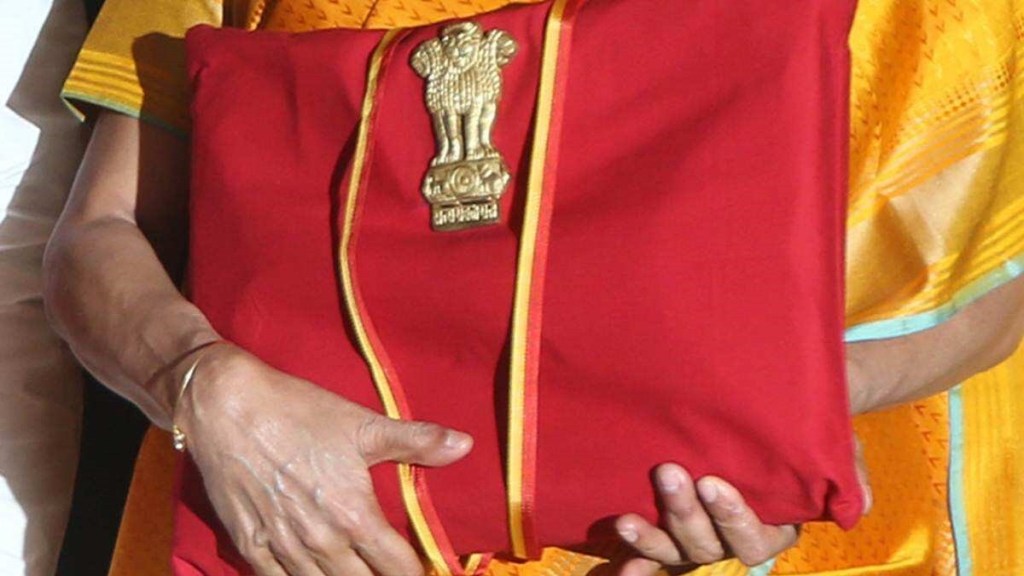Finance minister Nirmala Sitharaman will present the interim Budget 2024 in Parliament today. We explain what the interim Budget is, and how it differs from a general Budget, along with a brief glossary of the Budget heads of the financial accounts of the government
l How an interim Budget is different
An interim budget is presented ahead of the general election, when the incumbent government needs Parliament’s approval to draw money from the Consolidated Fund, for a new financial year that runs beyond its term. This approval will be valid for the period till a new government takes charge and presents the Budget for the full year. To be sure, a Vote on Account is obtained through an Appropriation Bill for the period concerned. However, the interim Budget estimates are also presented for the whole year.
l Can major schemes or tax changes be announced?
While there is no Constitutional bar on the government to make changes in the tax regime in the interim budget, the precedence has been to desist from such measures. However, the restraint hasn’t been uniformly exercised. In 2004, Jaswant Singh announced a 3-year extension of waiver of long-term capital gains tax on shares, in 2014 P Chidambaram unveiled excise duty cuts for vehicles and capital goods, and in 2019 Piyush Goyal extended assorted reliefs for taxpayers, and launched income support scheme for farmers (PM Kisan) with `75,000-crore outlay.
l Revenue and Capital Budgets
The Union Budget comprises Revenue and Capital Budgets. Revenue Budget does not alter the government’s assets and liabilities whereas the Capital Budget does. Capital receipts and capital payments (expenditure) make Capital Budget and revenue receipts and revenue expenditure constitute Revenue Budget.
l Capital receipts
Includes market borrowings and other loans but also non-debt receipts like proceeds of disinvestment/sale of government assets, including incorporated companies and recovery of loans. The receipts cause a decrease in the government’s assets.
l Revenue receipts
Revenue receipts include (mostly) tax revenues but also non-tax revenues. The latter consists of interest and dividend on investments made by the government and fees and other receipts for services rendered by the government (for example, licence fees from telecom companies for spectrum).
l Capital expenditure
This creates or reduces the government’s assets/liabilities, consists of expenditure on acquisition of assets like land, as also investments in shares, etc., and loans and advances granted by the Centre to states/UTs.
l Revenue expenditure
Incurred for the running of government departments and various services (administrative expenses, payments of salaries/ pension, etc.), interest payments on debt, subsidies, etc. These don’t result in creation of assets.
l Revenue deficit/ surplus
This is the excess of revenue expenditure over revenue receipts. If receipts are more than expenses, it it is a surplus.
l Gross fiscal deficit
Usually referred to as fiscal deficit, it is the difference between the government’s total expenditure and its total non-borrowed receipts. To elaborate, this is the difference between the total expenditure by way of revenue, capital and loans net of repayments, and revenue receipts and capital receipts which are not in the nature of borrowings but which accrue to the government, on the other.
l Tax revenue
Revenue collected from taxes imposed on income and profits (direct taxes) and those levied on consumption of goods and services/transactions (indirect taxes). This is the main source of the government’s revenue. Tax is an involuntary fee levied on individuals and firms by the government in order to finance its activities. In principle, these are quid pro quo in nature.
Gross Tax Receipts includes all taxes collected net of refunds, while Net Tax Receipts (NTR) are the actual inflows into the Budget after mandatory devolution of certain part of revenues from the divisible tax pool to states. Proceeds of cesses (imposts linked to specific purpose) and surcharges (additional charges on taxes) are not shareable with states and go straight into NTR.
l Public debt
It is the total amount, including liabilities, borrowed by the Union and state governments. The debt, serviced out of the CFI in the Centre’s case, includes a large internal component and a much smaller external debt. While a government-appointed panel had pitched for a debt-to-GDP ratio of 60% (40% for Centre and 20% for states) by FY23,the ratio peaked at 89% in FY21 and was at 83.4% in FY22.

